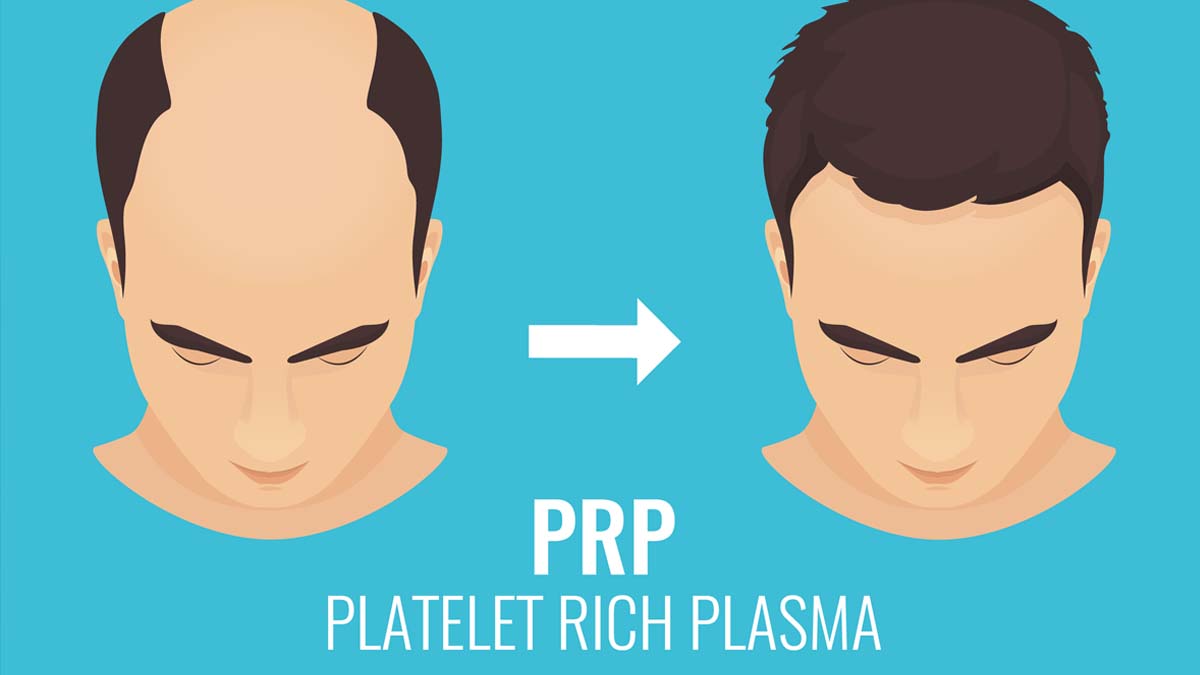Though the technology surrounding the use of platelet-rich plasma, or PRP, has been around since the 1980s and used for medical applications such as joint healing, the aesthetics industry has championed this minimally invasive modality for hair restoration and hair loss prevention for a decade.
A less costly, less invasive prospect than surgical hair transplantation, providers in Charleston are keeping up with the latest available research and technology.
PRP and its relative, PRF or platelet-rich fibrin contain growth factors and proteins that speed tissue repair, trigger cell reproduction and stimulate tissue regeneration.
After scheduling a consultation with a qualified health professional to determine whether you’re a good candidate for treatment, you’ll have a small blood draw. Your blood will then be spun in a centrifuge to separate the platelet-rich plasma or, as with platelet-rich fibrin, to create a fibrin clot, rich with platelets, white blood cells, cytokines and circulating stem cells.
Once the solution is spun, practitioners draw up the plasma, often called “liquid gold” into a syringe and inject it back into the scalp.
From here, the solution gets to work repairing damaged follicles and strengthening healthy ones. Since PRP is essential to wound healing, our bodies heed the call and, assuming the area flooded with PRP needs healing, sends defenses that produce extra collagen and new hair is born.
Factors That Affect the Outcome
Jennifer Fabrizi, M.S., PA-C, of Essential Health, a functional and integrative health practice in Mount Pleasant, points out that there are a few factors that affect the outcome of any PRP or PRF-centered restoration process.
“You’ll always want to investigate, on a deeper level, why the hair loss is occurring. You want to ensure you’re a good candidate,” she advised. “The cause of and where you are in your cycle of hair loss can affect the outcome.”
The equipment your practice uses can make a difference, too.
“If a provider doesn’t have the right centrifuge, we may not capture even a fraction of the cells we could with a better machine.
We want as many bioactive cells as we can get. If we do, the more likely you’ll be happy with the results,” Fabrizi said.
Fabrizi likes to partner her PRP patients with a few sessions of red light therapy as well as support their whole body with nutritive supplements.
Most PRP patients will need a series of three to six treatments, four to six weeks apart and it doesn’t end there. Maintenance is required every few months after your initial series, depending on your desired results.
Pump Up the Volume
Kelli Koniver, Ph.D., of Koniver Aesthetics in Charleston, was already familiar with these restorative and protective measures when she began to experience severe and multiple bouts of COVID-19 related hair loss, but after a few rounds of plain RPR and PRF treatments, they left her underwhelmed.
“I felt they took too long to work and while many clients were happy with their results, I just didn’t feel they were robust enough for me,” Koniver said. “I’d already experienced tremendous shedding at that time.”
Introduced to a product called ACell, by her friend and mentor, Dr. Anil Tajani, Koniver decided to give it a try to restore her hair.
Derived from porcine bladder cells — that’s right — cells from a pig’s bladder, ACell attracts stem cells to what your body perceives as an injury in need of healing and transforms them into cells that actually produce hair.
When used, ACell and PRP or PRF are often combined, creating a powerful regeneration serum injected, as with PRP or PRF alone.
“In our practice, we combine ACell with PRF,” Koniver said of the process. “We’ve found this combination promotes greater growth and overall scalp health.”
According to Koniver, if you are a candidate to begin with, you’re likely to notice results after a single session. However, as with regular PRP, there is still some maintenance involved.
“We recommend patients repeat the single session annually, as they are able. We also recommend adjunct therapy such as Nutrafol hair supplements, growth serum, etc., to support the in-office results at home,” Koniver shared.
The Thick of It
Most users of these restorative procedures are satisfied with the results, seeing better retention of the hair they have, some new growth and thicker, more numerous strands.
As with many aesthetic procedures, not everyone is a candidate. Both practitioners advised that pregnant women, anyone with an active infection, cancer, and, with the ACell product, anyone with allergies or objections to the use of porcine products, avoid these procedures. It’s also generally advised that because this process involves extraction of blood, those on blood thinners or with bleeding disorders may not be eligible for PRP hair restoration.
It may be easier and less invasive than a full-on hair transplant, which is an actual surgery, but PRP and PRF injections still have possible side effects and still require aftercare.
Aside from the usual bruising and swelling typically associated with injection procedures, patients might also experience some skin irritation and, though it’s touted as a “virtually painless” procedure, slight pain.
Aftercare can include short-term limitations such as avoidance of blood-thinning agents like vitamins A and E, fish oils and aspirin for a week, skipping vigorous exercise and the sun for a few days, skipping caffeine and, if you’re a smoker, skip those cigarettes. Be sure to ask for clear post-treatment instructions from your provider.
Sources:
Studies in 2015 (Singhal P, Agarwal S, Dhot PS, Sayal SK. Efficacy of platelet-rich plasma in treatment of androgenic alopecia.) and 2022 (Meznerics FA, et al. Platelet-Rich Plasma in Alopecia Areata-A Steroid-Free Treatment Modality: A Systematic Review and Meta-Analysis of Randomized Clinical Trials. Biomedicines) illustrated improvement in all patients.
By Amy Gesell







